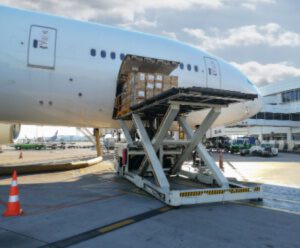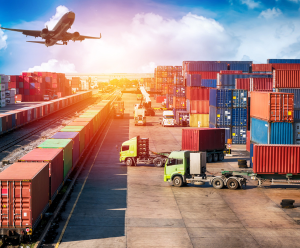
Air freight sector poised for an unseasonal summer

To misquote Mark Twain, reports of air freight’s demise this summer were greatly exaggerated.
Indeed, signs of a softening second quarter are difficult to discern. Thus far, all indicators point to a strong ongoing demand for exports out of Asia.
“Thanks to the e-commerce boom out of China, Asia-Pacific trade is recovering quickly. Global air cargo demand remained solid in May, with a 9 percent year-on-year increase compared to May last year,” said Niki Frank, CEO, DHL Global Forwarding Asia Pacific.
And with shipping disruptions mounting rather than easing, there is every chance the current unseasonal bull(ish) run for air cargo could continue throughout the summer months.
“And as Chinese e-retailers are seeking U.S. market expansion, we are expecting this boost in air cargo demand to hopefully sustain itself until the peak season begins in October,” added Frank.
The ‘bull run’ in numbers
Some indicators of the ongoing momentum of exports moving out of Asia via air freight in what should be the slack season are quite startling. Driven by exports, Hong Kong International Airport (HKIA) has recorded record double-digit year-on-year cargo volume growth each month. Exports in April alone were up 24.7 percent compared to a year earlier.
WorldACD reported in late May that tonnages were up by 9 percent globally, led by strong demand from Asia Pacific with an increase of 15 percent, and Middle East and South Asia (MESA) which increased by 16 percent.
Member carriers of the Association of Asia Pacific Airlines (AAPA) recorded a 13.7 percent year-on-year increase in demand in April. While offered freight capacity expanded by 14.4 percent in the month, rates have continued to rise.
WorldACD calculated that average rates from MESA were highly elevated in late May (45 percent increase). To European destinations, average rates from MESA origins were up 119 percent year-on-year.
Subhas Menon, AAPA Director, said Asia Pacific airlines had seen volumes boosted by the pick-up in global demand supporting export activity from major manufacturing hubs located in the region, in particular, China.
Supporting the statement, TAC Index found that air freight prices outbound from Shanghai were up 41.5 percent at the end of May compared to a year earlier.
The forward outlook
There is every chance that Asia’s export boom could have legs. The May edition of DHL’s Air Freight State Of The Industry report noted that sea-air service demand is anticipated to remain high due to escalations in the recent Red Sea conflict. The continuous boom in e-commerce will also likely boost air freight markets throughout the summer.
Following a slight dip in May, analyst firm Nomura’s updated Asia exports leading index, also known as NELI, rebounded to 100 in June. The NELI reinforces the view that double-digit Asian export growth is within reach by the end of Q2.
Nomura cited a sustained tech-led goods cycle upturn, Europe’s ongoing economic recovery, and fledgling optimism around China as positives for Asia’s export growth.
Moreover, air freight demand could also be bolstered by more summer disruption to shipping services. S&P Global noted that a new round of disruptions to operations at Asian ports had further elevated shipping rates as May turned to June.
Citing the U.S. National Oceanic and Atmospheric Administration, the financial analyst firm added that the Atlantic hurricane season is set to be more active than normal through the peak shipping period.
U.S. customs crackdown
Amid the U.S. import charge, the trans-Pacific market encountered a major stumbling block to the free flow of e-commerce volumes in late May when the U.S. Customs and Border Protection (CBP) agency started inspecting every single e-commerce shipment coming from mainland China on freighters, according to The Loadstar.
As previously reported in this column, e-commerce exports from China to the U.S. have been a key driver of air freight this year. A statement released by CBP at the end of May confirmed that the agency was taking action to ensure compliance and minimize the exploitation of the small package, or de minimis, environment. This has resulted in congestion at customs warehouses and shipment delays.
“The freight sector has been no stranger to supply chain disruptions in 2024. But carriers have proven that they are capable of adapting quickly to volatile market conditions,” said Frank. “In particular, carriers in Asia Pacific are projected to increase widebody belly capacity in anticipation of the summer 2024 traffic season, which will likely help to ease the supply-demand balance.”
SAF production to triple
As economic recovery takes flight, increased travel demand and the e-commerce boom have increased aviation emissions.
Governments, through the International Civil Aviation Organization (ICAO), aim to achieve a 5 percent reduction in CO2 emissions in international aviation through Sustainable Aviation Fuels (SAF) by 2030. But, the International Air Transport Association (IATA) has expressed that this goal may not be achievable on a global basis, as it will require 27 percent of renewable fuel capacity to be comprised of SAF instead of the current 3 percent.
According to the latest projections from IATA, SAF production is set to triple to 1.9 billion liters (1.5 million tons) this year. However, IATA admitted this would only account for 0.53 percent of aviation’s fuel needs in 2024.
Some 140 renewable fuel projects capable of producing SAF have been announced to be in production by 2030. If all of these proceed to production as announced, total renewable fuel production capacity could reach 51 million tons by 2030, with production capacity spread across almost all regions.
More diversified feedstocks to reduce reliance on hydrogenated fatty acids, which currently provide around 80 percent of SAF, and more government incentives, were among the production accelerators identified by IATA.
To accelerate the take-up of SAF by accounting for usage and reporting emissions reduction from it, IATA aims to launch an SAF registry by the first quarter of 2025.
Announcing the registry on 2 June at the start of its three-day annual meeting in Dubai, IATA explained that the registry will ensure that the environmental attributes of SAF are properly recorded and transferred between parties. This will allow airlines and their customers to report emissions reductions accurately, aligning with reporting obligations and international standards.
“SAF will provide about 65 percent of the mitigation needed for airlines to achieve net zero carbon emissions by 2050,” said Willie Walsh, IATA’s Director General. “So the expected tripling of SAF production in 2024 from 2023 is encouraging. We still have a long way to go, but the direction of exponential increases is starting to come into focus.”
ALSO WORTH READING













 English
English